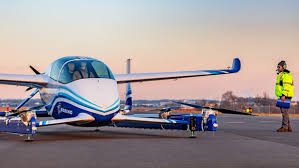
Breaking News
 NonConformist Series: Practical Wealth - Join us virtually Dec 29-30, 2025
NonConformist Series: Practical Wealth - Join us virtually Dec 29-30, 2025
 New bill would allow private citizens to fight cartels: 'WE ARE UNDER ATTACK'
New bill would allow private citizens to fight cartels: 'WE ARE UNDER ATTACK'
 Carnivore Got Me 90% There. This One Drink Changed Everything
Carnivore Got Me 90% There. This One Drink Changed Everything
Top Tech News
 Perfect Aircrete, Kitchen Ingredients.
Perfect Aircrete, Kitchen Ingredients.
 Futuristic pixel-raising display lets you feel what's onscreen
Futuristic pixel-raising display lets you feel what's onscreen
 Cutting-Edge Facility Generates Pure Water and Hydrogen Fuel from Seawater for Mere Pennies
Cutting-Edge Facility Generates Pure Water and Hydrogen Fuel from Seawater for Mere Pennies
 This tiny dev board is packed with features for ambitious makers
This tiny dev board is packed with features for ambitious makers
 Scientists Discover Gel to Regrow Tooth Enamel
Scientists Discover Gel to Regrow Tooth Enamel
 Vitamin C and Dandelion Root Killing Cancer Cells -- as Former CDC Director Calls for COVID-19...
Vitamin C and Dandelion Root Killing Cancer Cells -- as Former CDC Director Calls for COVID-19...
 Galactic Brain: US firm plans space-based data centers, power grid to challenge China
Galactic Brain: US firm plans space-based data centers, power grid to challenge China
 A microbial cleanup for glyphosate just earned a patent. Here's why that matters
A microbial cleanup for glyphosate just earned a patent. Here's why that matters
 Japan Breaks Internet Speed Record with 5 Million Times Faster Data Transfer
Japan Breaks Internet Speed Record with 5 Million Times Faster Data Transfer
Boeing VTOL air vehicle prototype makes first flight

This Tuesday, one of the prototypes made its first flight.
Known for now simply as the passenger air vehicle (PAV), the aircraft is part of the company's Boeing NeXt urban air mobility project. It's designed to fly autonomously, performing helicopter-like vertical takeoffs and landings, but switching over to faster and more efficient fixed-wing flight while en route.
It measures 30 feet long by 28 feet wide (9.1 by 8.5 m), and has a claimed battery range of up to 50 miles (80.5 km). Among other things, Boeing NeXt is also developing an electric cargo air vehicle (CAV), which can carry a payload of up to 500 lb (227 kg) – it made its first indoor test flight last year, with its outdoor testing scheduled to begin sometime this year.

 Aluminum Causes Brain Damage
Aluminum Causes Brain Damage Advanced Propulsion Resources Part 1 of 2
Advanced Propulsion Resources Part 1 of 2

